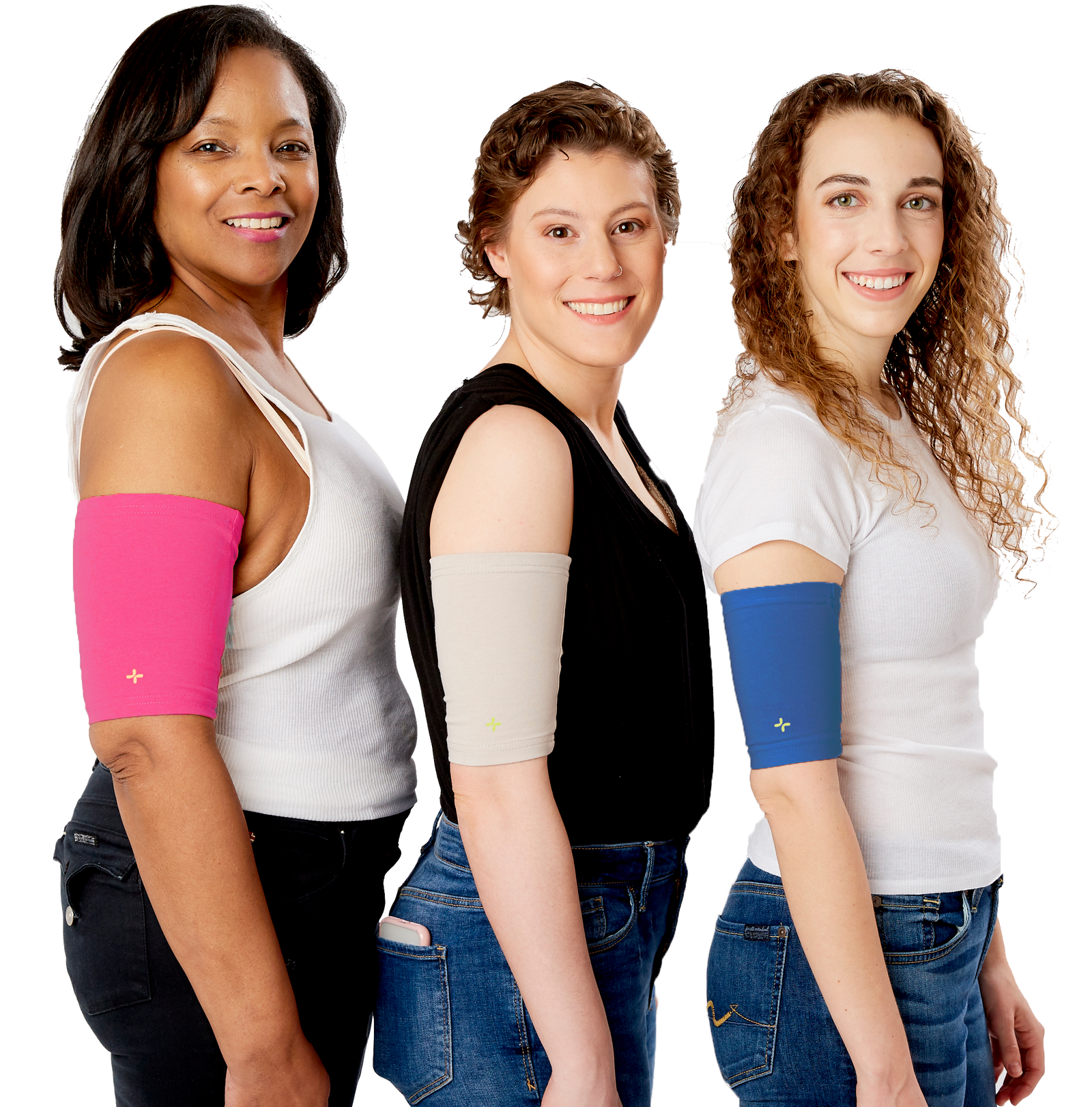In this blog post, we’ll be talking about one of the treatments for which our port access shirts can be useful: tunneled catheters.
Let’s begin with the basics:
What are tunneled catheters?
A tunneled central venous catheter is a long, flexible tube that is inserted in the skin and enters the veins of the body. Tunneled catheters can also be called external catheters or central lines.
Where is a tunneled catheter placed?
A tunneled catheter is placed in the upper chest. The catheter enters the skin (typically under the collar bone) and enters a vein. Once in the vein, the catheter is advanced until it terminates just near the entrance of the heart (also known as the right atrium). This catheter allows your clinician to administer medication directly into the veins leading into your heart to be pumped throughout the entire body.
I’m having trouble picturing this, what would a tunneled catheter placement look like on a person?
The following diagram shows where a tunneled catheter is placed:

You can also see where a tunneled catheter is placed inside a person in this video from youtube.
Now that I understand where a tunneled catheter is placed, can you tell me a little more about how it is inserted into the patient?
The tunneled catheter placement procedure is done in an operating room while the patient is under moderate sedation or general anesthesia.
The following steps are followed:
- The doctor makes several small cuts in the skin. One cut is made over the vein where the catheter will enter the body. The other cut is made where the catheter will come out of the skin.
- The tip of the catheter is inserted in the large vein near the collarbone and then threaded into or near the right atrium of the heart.
- The rest of the catheter is tunneled just under the skin away from the vein and comes out lower on the chest or abdomen.
- The doctor places a few stitches in the skin around the catheter to hold it in place.
- The incision over the vein is closed with a few stitches or pieces of tape.
- A dressing is placed over both incisions.
- A chest x-ray is done to confirm the catheter tip is in the correct position.
There is a small cuff on the catheter just behind where it comes out of the skin. This may be felt as a small bump under the skin. Body tissue will heal into this cuff in about three weeks and hold the catheter in place. The area may be tender for one to two days after the catheter is placed, but the soreness should disappear in a few days.
If one end of the catheter is outside the skin on the chest, will the patient feel any pain as a result of the catheter?
The patient should feel no pain when fluids are put into the end of the catheter hanging outside the body.
What are these catheters used for?
A tunneled catheter is used when a person:
- Needs intravenous (IV) access so they can receive fluids, transfusions, or drugs for a long period of time (generally longer than three months)
- Needs multiple blood draws for lab tests (more blood draws can be done with a tunneled catheter than with a PICC line)
- Has peripheral veins that are not large enough for a PICC line
- Has small veins in the body that can no longer be used for giving fluids or drugs
When a person needs IV therapy, the IV tubing is connected to the end of the catheter outside the body. The fluid or medicine flows through the IV tubing into the catheter, then into the bloodstream. After treatment is over, the IV tubing is removed and a new cap is placed on the end of the catheter.
What are the primary benefits of using this kind of catheter?
There are many benefits to having a tunneled central venous catheter rather than a regular IV. The most important benefit is that it reduces the number of needle sticks. However, it is important not to tell children that having a tunneled catheter means they will never have to be “poked” again, since they may still need needle sticks for some blood tests.
Other benefits of using this kind of catheter include:
- The catheter can remain in the vein for a long time
- The catheter is very secure in the vein
- The catheter reduces discomfort because the IV therapy can be given more easily
- The catheter prevents the “burning” sensation sometimes felt when getting drugs by other IV methods
Are there different kinds of catheters?
Tunneled catheters are sometimes referred to by their brand name. Broviac, Hickman, and Groshong catheters are some examples of these names.
How are you supposed to care for a tunneled central venous catheter?
A tunneled catheter requires special care to prevent infection and blood clots. The site where the catheter exits the body must be cleaned often and a fresh, sterile dressing needs to be applied and taped in place. The site should be checked often for redness, swelling, and drainage, which could be indications of infection and if you see any of these contact your healthcare team immediately.
Does having a tunneled catheter affect your daily lifestyle?
A person with a tunneled catheter may continue most normal activities while the catheter is in place. Showering or bathing is done with plastic or waterproof tape over the dressing. Swimming is strongly discouraged. Please discuss with your doctor any specific limitation they may recommend for you.
Updated: 9/3/2021
Reviewed by: Gregory Weingart, MD, a practicing ER physician, and Assistant Professor at the Eastern Virginia Medical School










John Elam
October 27, 2020
Your information has helped me to make a decision to have the tunnel line installed.